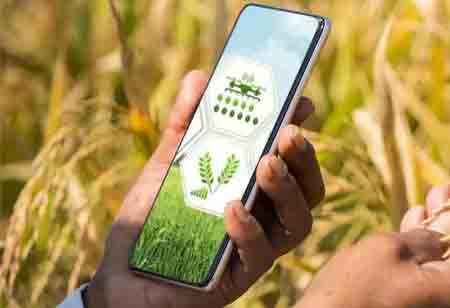Thank you for Subscribing to Agri Business Review Weekly Brief
Different Types of Farm Equipment to Know
Modern farmers have access to a wide range of equipment options for their various activities each year.

By
Agri Business Review | Friday, April 28, 2023
Stay ahead of the industry with exclusive feature stories on the top companies, expert insights and the latest news delivered straight to your inbox. Subscribe today.
Farm equipment has various key advantages for farmers, such as a reduction in production time and enhanced soil fertility, and it also greatly reduces farmers' efforts.
FREMONT, CA: Modern farmers have access to a wide range of equipment options for their various activities each year. Small-scale homesteaders and industrial-sized farming operations can both benefit from the different types of farm equipment available, from high-tech combine harvesters to simple tractors. Keeping track of all the options, however, can be challenging.
Some of the significant types of farm equipment and their uses are described below:
The Farming Vehicles: Vehicles represent the largest investment in farm equipment and its uses. In addition to trucks, there are several other farm-specific vehicles.
Tractors: A tractor is a broad category, to say the least. In the farming world, tractors are ubiquitous, and they are available in various sizes. A tractor is primarily used to pull farm equipment, but modern tractors can be fitted with a variety of attachments to meet almost any farming need. Small and large farmers alike need tractors for this reason.
Tractors come in several types, including:
Compact tractors: A compact tractor is a small, high-powered tractor that can perform all the basic functions needed on a farm. In tight spaces where traditional tractors cannot work, compact tractors are ideal for material handling.
Track tractors: With rubber tracks instead of tires, track tractors are able to plow fields more efficiently while providing a smoother ride for the operator.
Wheeled tractors: The wheeled tractor is a general-purpose tractor that can be used by farmers for a variety of tasks. It is possible to customize these utility tractors to meet a variety of needs, including tilling, material handling, and equipment pulling. Depending on horsepower, lifting capacity, control, and cab style, modern farmers can select the wheeled tractor that works best for them.
Tractor Attachments: Tractor attachments add new functionality to tractors by attaching to them or pulling behind them. Their applications range from soil management to seeding. Below are some examples of farm machinery attachments.
Plows: Plows are large tractor attachments that cut furrows in the soil with long blades. In addition to loosening and turning the soil, this process also kills off any surface vegetation that isn't supposed to be there. For the soil to be ready for planting, plowing is an essential first step.
Plows may seem simple enough, but there are many different types of plows. Plows are suited to specific soil types, soil conditions, and crop types.
Spreaders for fertilizers: They spread fertilizer across a field, as their name suggests. Although fertilizer spreaders can be operated separately, most farming operations require tractor-driven spreaders to spread fertilizer evenly and quickly.
There are several types of fertilizer spreaders, based primarily on the type of fertilizer. Tractor-mounted fertilizer spreaders can be classified into the following types:
Broadcast spreader: Probably the most common fertilizer spreader is the broadcast spreader, which uses gravity to disperse fertilizer.
Slurry spreader: A liquid manure spreader, or slurry spreader, sprays slurry of liquid manure across a field.





